Blue Protocol: Star Resonance Beginner Guide — Early Game Tips and Tricks for a Strong Start
2025-10-23
Welcome to our Blue Protocol: Star Resonance guide. Whether you’re exploring Magna for the first time, setting up your main class, or just trying to make sense of all the currencies and crafting systems, this Star Resonance beginner guide will walk you through everything you need to know to get a smooth start.
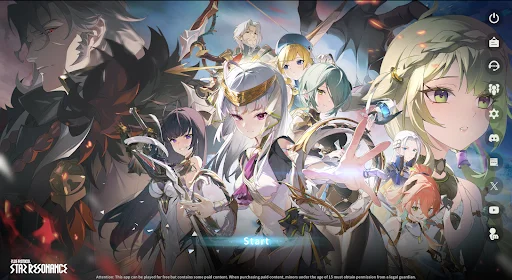
Table of Contents
If you’re planning to grind efficiently or manage multiple characters across PC and mobile, tools like OSLink can make your adventure far easier. With OSLink, you can run Blue Protocol: Star Resonance on your PC, sync your gameplay sessions, and farm resources automatically, all while keeping your devices free for other tasks. It’s the perfect companion for players who want to level up faster and make the most of their first days in Magna.
Your First Day in Blue Protocol: Star Resonance
Pick and Level One Class First
If you’re not sure where to start, Verdant Oracle (healer) and Shield Guardian (tank) are great beginner-friendly choices. They’re in high demand for party play, which means faster dungeon queues and easier team progression.
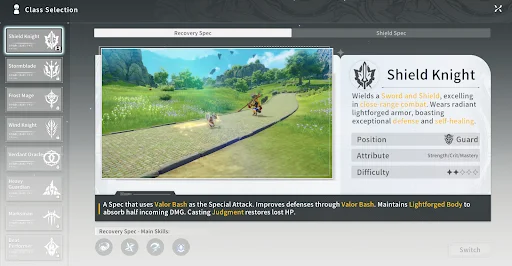
Join a Guild Early
Guilds in Star Resonance are more than just social circles, they’re your best source of steady progression. Joining one early unlocks daily guild cargo missions, access to the Guild Shop, and weekly Stamina Potions that give you two extra days’ worth of life-skill grinding.
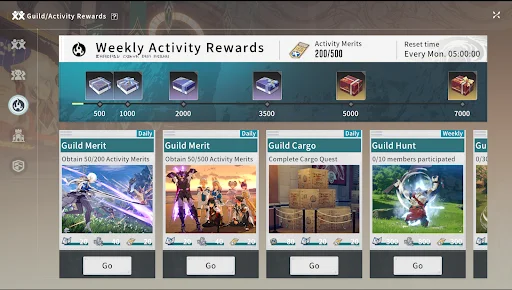
Plus, being in an active guild means you’ll have people to run dungeons, bosses, and raids with. Those “Welcome back!” messages in chat aren’t just nice, they keep you engaged and progressing.
Follow the Main Story and Unlock Key Features
The Main Story Quests (MSQ) guide your early journey and unlock most core systems. Story progression is sometimes server-gated by day, but it grants huge experience boosts and ensures you unlock travel abilities faster to help you better explore.
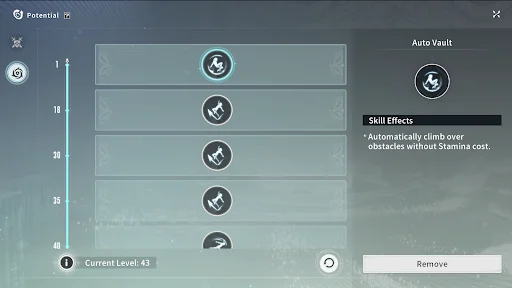
Understanding Classes and Combat Basics
Whether you prefer close-range brawls or long-distance spellcasting, understanding how your class and ability score work is key to surviving early challenges and scaling smoothly into endgame content.
Choosing the Right Class
Every class in Star Resonance offers a distinct playstyle. While all are viable, picking one that matches how you enjoy playing will make your journey far smoother.
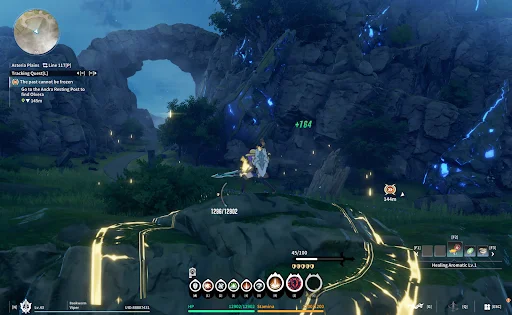
-
Verdant Oracle (Healer) – Focuses on restoring HP, shields, and buffs. Ideal for beginners or players who like to support others.
-
Shield Guardian (Tank) – High defense and crowd control, perfect for holding aggro and protecting your party.
-
Storm Blade / Wind Knight (Melee DPS) – Agile sword fighters that rely on dodging and combos to deal fast-paced damage.
-
Beat Performer / Marksman (Ranged DPS) – Long-range damage dealers that excel at consistent output but need to manage positioning carefully.
-
Ice Mage (Caster DPS) – Powerful elemental spells with high burst potential but lower mobility.
If you’re unsure, start with a class that feels natural. You can switch classes later at the Bureau by speaking to Millia. Just remember: leveling a new class from scratch takes time, so it’s best to master one before branching out.
Combat Flow and Skill Progression
Unlike tab-target MMOs, Star Resonance gameplay uses real-time action combat. You’ll dodge attacks manually, chain abilities, and time your counters, think of it as part RPG, part action game. Your combat strength depends on several factors:
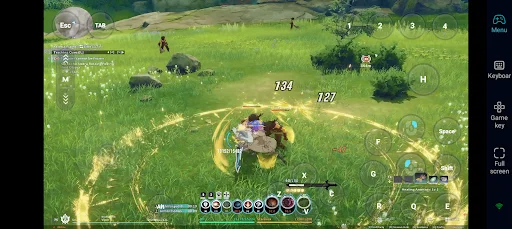
-
Skill Levels – Upgrade abilities with Bound Luna to boost base damage and unlock secondary effects.
-
Talent Tree – Each class has a unique tree that grants stat boosts and passive skills. You can freely reset and respec anytime, so don’t stress about early choices.
-
Ability Score – This number determines how strong your character is overall and what difficulty tiers you can enter. It’s influenced by gear, skills, talents, and modules.
Focus on balanced growth, instead of maxing a single damage skill, level all your abilities evenly. This “horizontal” upgrade approach improves your ability score faster, unlocking tougher dungeons and better loot.
Progression and Resource Management
Once you’ve settled into your class and unlocked the main systems, it’s time to think about how to progress efficiently.
Manage Luna and Orbs Wisely
You’ll quickly encounter two main currencies, Bound Luna and Unbound Luna.
-
Bound Luna is used for basic upgrades like leveling skills or crafting.
-
Unbound Luna is rarer and functions like premium gold, it can be traded or used in the player market.
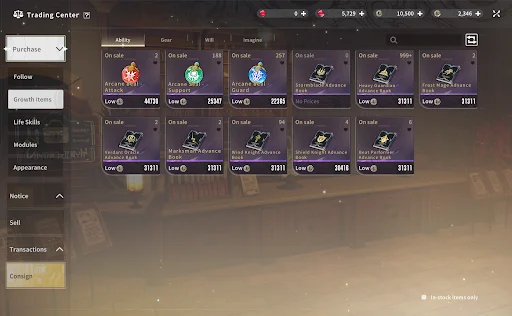
Tip: Treat Unbound Luna like treasure. Don’t spend it on small conveniences early on. Prices in the trading center are heavily inflated during the first weeks, so focus on farming materials instead of buying them.
As for Orbs, use them for progression-related purchases such as crafting materials or Imagine upgrades.
Work on Life Skills Early
Life skills are your gateway to steady progress and extra income. Each serves a purpose, Smelting improves weapon and armor materials and Culinary boosts combat stats with food, and Gemcrafting helps socket stat bonuses. The catch? All of them consume stamina, which regenerates at 400 points per day.
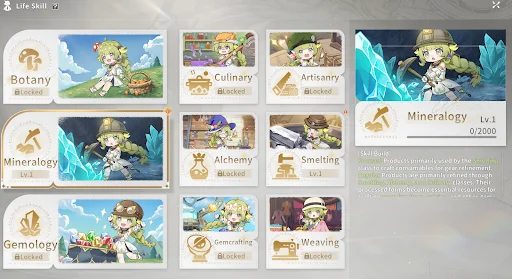
Pro Tip: Smelting and Gemcrafting are the most valuable early on, especially if you want to refine gear and sell materials for profit. Focus your stamina there, and avoid buying materials from NPCs when possible, save your Luna for later upgrades.
Establish a Daily and Weekly Routine
Here’s a simple pattern to follow during your first few weeks:
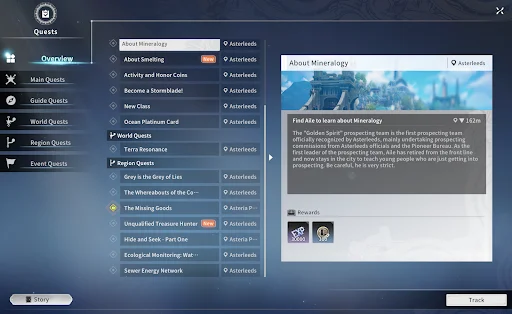
Daily Tasks:
-
Use all Boss Keys (2 per day, cap at 6).
-
Complete Guild Cargo and check the Mystery Shop.
-
Spend your stamina on life skills.
-
Clear dungeons for gear and materials.
Weekly Priorities:
-
Finish Pioneer Tasks for bonus gear.
-
Run Vault Challenges and Guild Hunts (Fri–Sun).
-
Buy Focus Potions and upgrade materials from the Guild Shop.
Tips: These small habits compound, following this routine ensures you’re always gaining power, gear, and resources without feeling lost or behind.
Gear, Refinement, and Imagines Explained
Gear and Imagines are the heart of your power in Blue Protocol: Star Resonance. They don’t just increase your stats, they directly affect your ability score.
How to Get Gear Fast
In Star Resonance gameplay, gear drops come from three main sources:
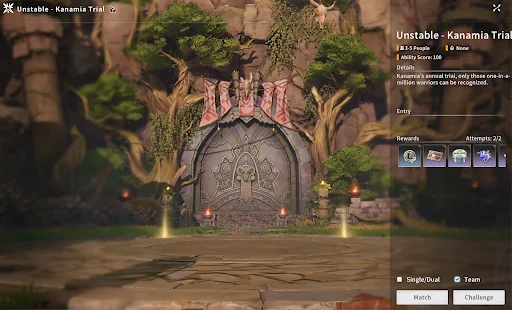
-
Dungeons – Your primary route for farming weapons and armor. Run daily and weekly dungeons for progressively stronger loot.
-
World Bosses – These massive enemies drop high-tier gear even without using boss keys, making them one of the best early-game farming options. Try to join large groups when farming to maximize your drops.
-
Crafting and Smelting – Through life skills, you can create or refine purple-tier gear using alloy shards and other materials. Dismantling old gear provides shards that can be reused for crafting better items later.
Tips: Don’t rush to enhance every piece of equipment you find. Focus on your main weapon and one or two armor slots first, you’ll replace lower-tier pieces quickly in the early game.
Refining Safely and Efficiently
Refinement lets you boost the stats of your gear, but it comes with a success-rate risk. Each attempt consumes valuable resources such as Star Forge Crystals and Mech Shards.
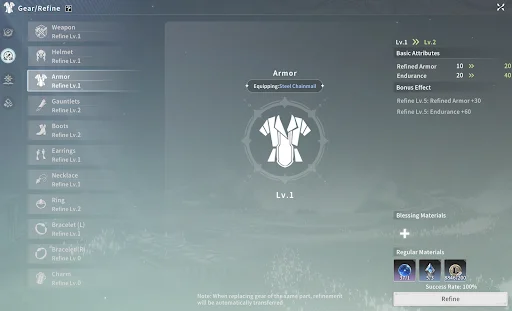
Never refine unless your success chance is 95 % or higher. Mech Shards can improve your success rate, and they’re renewable through crafting and drops, use them to minimize failure risk.
Pro Tip: Treat every Star Forge Crystal like a limited daily ticket. Make each upgrade count and avoid unnecessary retries, consistency beats luck when it comes to refinement.
Understanding the Imagine System
Imagines are one of the most unique mechanics in Blue Protocol: Star Resonance. Think of them as collectible “spirit companions” that add stats, passive effects, and sometimes powerful active abilities.
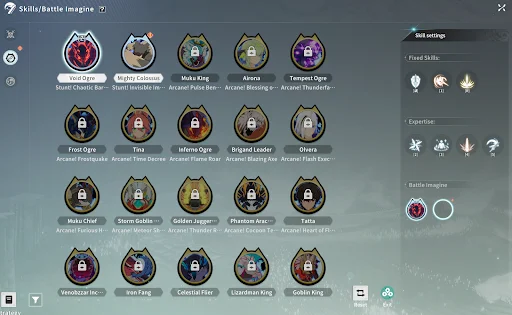
Early in the game, focus on purple-tier Imagines, they’re easier to obtain and, when fully leveled, can outperform under-leveled gold ones. The gacha for Imagines is accessible to free-to-play players, but you’ll also earn many from boss drops and crafting.
Tips: Save your Orbs: Don’t rush to spend them on the Imagine gacha right away. Wait until you’ve chosen a main class so you can invest in Imagines that truly complement your build.
Best Early Imagines to Aim For
Here are some reliable early-game options worth farming for:
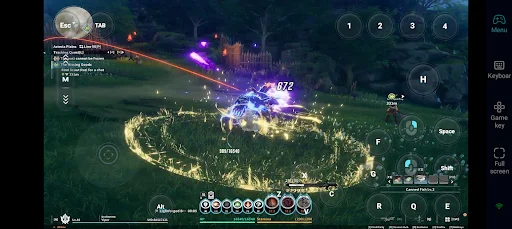
-
DPS Classes: Mukuchi (critical rate), Phantom Arachno Crab (mastery), Celestial Flyer (haste).
-
Tanks: Frost Ogre and Tempest Ogre, both improve crowd control and survivability.
-
Healers: Vinazar for healing power; Irona is especially valuable for its party-revive effect.
Free-to-Play vs Paid Progression
One of the most common questions new players ask is whether Blue Protocol: Star Resonance is pay-to-win. The short answer is NO. The difference between paying and grinding is more about speed than strength. All high-tier gear, Imagines, and upgrade materials can be earned through gameplay, purchases simply shorten the waiting time.
Tips: To make your sessions even more comfortable, run the game on your PC and play remotely with OSLink. It handles the heavy lifting while you relax and control everything from your phone—no tedious key-mapping, no overheating, just hours of seamless adventure.
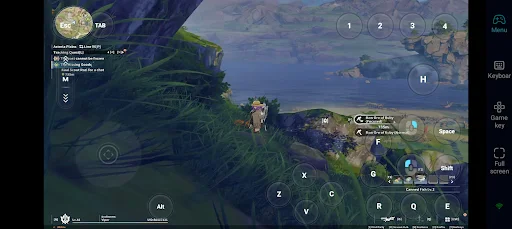
Conclusion
Now that you’ve mastered the basics and Blue Protocol: Star Resonance tips, your next step is simple, log in, pick your main class, join a guild, and start building your power one day at a time. And if you want to make that grind smoother, OSLink can help, play Blue Protocol: Star Resonance on your PC, manage multiple sessions, and keep farming even while you’re away. It’s the easiest way to stay ahead, level faster, and make every minute of your Star Resonance journey count.

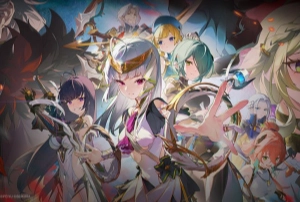
 Pre-set keymaps for easy play
Pre-set keymaps for easy play


